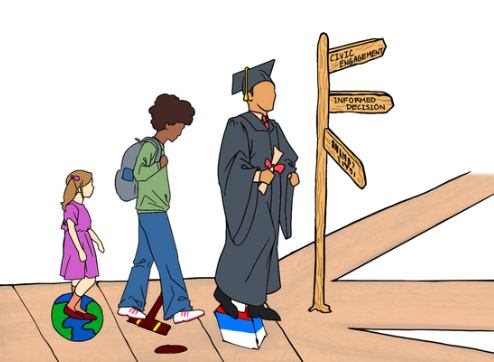Written by Janet Wang
For many of us, high school is just a platform to getting into our dream colleges. We spend countless hours preparing for standardized tests, signing up for Advanced Placement (AP) courses and finding tutors to help us in challenging classes—all with the goal of getting into college. The college talk is so prevalent in Palo Alto that it seems like it has turned into a culture in which everyone has certain college-related expectations. For educationally underrepresented students, however, college is less attainable. These students are often first-generation college attendees, come from low-income families or have previously attended Title 1 schools. College Pathways was developed as a program to provide resources and encouragement to about 130 underrepresented students on campus, supply more access to college opportunities, increase support and boost educational resources. It is imperative that this program is not only well-maintained, but also expands in order to offer resources to students who would not have access to them otherwise.
Giving underrepresented students access to college is an essential step in building thriving futures. Education is a key factor in that process and is an advantage that opens up doors to a multitude of opportunities. Disadvantaged students, however, are not presented with the same education options. In fact, less than 30 percent of low-income students enroll in a four-year school, and less than 50 percent of that group graduates. Through College Pathways, underrepresented students can take the first steps to receive the opportunities they deserve. A college degree allows more career options, flexibility and overall progress. People with college diplomas earn twice as much as people with high school diplomas; this in turn results in long-term financial stability.
Expanding the program also increases support. In families of first-generation college students, there is often a lack of understanding of college because they do not share the same experiences as families who have college alumni. Families with college alumni are often more familiar with higher education and how the experience works whereas first-generation college families often are not. College Pathways encourages potential first-generation college students to break the intergenerational cycle. According to guidance counselor and College Pathways Coordinator Myesha Compton, the program works with students to increase awareness and exposure about college and preparedness. Throughout the whole process, parents are able to support and stay informed about their student and attend parent events. Not only can they motivate their students, but parents also receive crucial information about college that can be continually passed down to future generations.
While many Palo Alto students are able to afford tutoring and test prep classes, underrepresented students cannot. According to the Southern Education Foundation, 55 percent of Californian students come from low-income families that earn less than $47,248 per year. Therefore, these students rely heavily on both teachers and educational resources for tangible support. College Pathways helps provide these resources for free and enables equal chances of academic success. By increasing the program, the achievement gap will shrink, as College Pathway-supported students will receive help more in line with other Palo Alto students. An equal opportunity to get the same education, despite socioeconomic status or background, presents people of all statuses with the same potential for success.
It is clear that College Pathways is necessary and vital to many underrepresented students’ futures. By expanding the program, the school will give these students additional support, educational assistance and an equal opportunity to college and beyond. College Pathways provides disadvantaged students with an environment that both helps them obtain the same resources to excel in college and prepares them to succeed in their lives while fostering personal connection and support. Prioritizing and growing this program will extend aid for more than the current 130 students to brighter, bigger futures they strive for and deserve.









